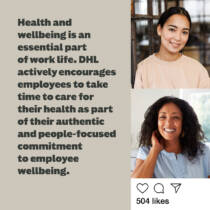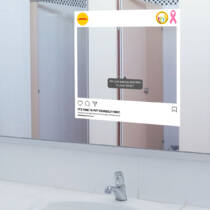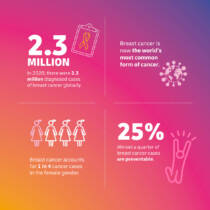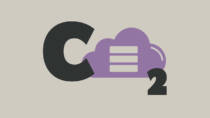What is the role of communicators in attracting women to male-dominated industries?
By Sally Pritchett
CEO
When one gender clearly dominates a business or sector, it means a loss of valuable skills, perspectives, and ideas. So, what can communicators do to promote gender diversity?
At Something Big, we have lots of experience working within industries that are typically male-dominated, like logistics, engineering, construction, finance and tech. To start a dialogue and share insights across businesses and sectors we brought together HR, Diversity, and Internal Comms leaders for a meaningful discussion on how to attract women into traditionally male-dominated sectors and drive a better gender balance. In this article, we’ll share the insights gathered and the actionable takeaways you can use to enrich your DEI toolkit.
Are we bridging the gender gap?
There are many industries that are male or female-dominated. For example, within the construction industry, 15% of the workforce is female, with just 2% of on-site workers being female. In contrast, some industries are predominately female, with just 2.22% of nursery nurses and assistants being male. A quick glance at the statistics reveals a stark gender imbalance across various sectors.
But the big question is, are we making any progress in this area? When looking at early careers, internships, and apprenticeships, a report by the Young Women’s Trust showed that in key sectors such as engineering, men outnumber women 25 to one. This glaring inequality emphasises the need for change.
What can communicators do to attract women to male-dominated industries?
During our discussion, we identified multiple ways that communicators can drive change and address gender imbalance in the workplace.
During the recruitment process:
- Ensure that gender-biased language is removed from job ads. You can use AI tools or dedicated gendered language decoders to help you identify any subtle bias in job ads.
- Simplify technical jargon in job descriptions to better welcome new people to your industry.
- Listen to the experiences of women within your business to find out why they like working there and use that insight to understand what could attract new employees.
- Use diverse advertising channels to reach new audiences. Within our discussion group, both Mosques and school newsletters were identified as channels for reaching new audiences.
- Have diverse and inclusive imagery in your recruitment materials, while ensuring your photography is representative of your workplace and culture.
Within workplace culture:
- Recognise that the workplace can still be a challenging environment for women. 61% of Gen Z’s and 49% of Millennials believe they’ve been harassed in the workplace in the last 12 months, including physical advances, inappropriate emails, exclusion and gender-based undermining.
- Implement safe avenues for employees to speak up and seek help about any negative experiences.
- Develop a culture of allyship and consider training all team members on the 5Ds of active bystander intervention – Distract, Delegate, Document, Delay, and Direct.
- Consider the language that is used within your business. It’s common to hear things like ‘working mums’ and ‘women in business’, and often these are meant in a well-meaning way, but we never hear about ‘working dads’ or ‘men in business’.
- Properly fund, support and empower employee resource groups (ERGs) to ensure your employees have a voice. This will enable you to get to the crux of what’s working, and what’s not.
Employee communications:
- Avoid empty communications or empty promises by ensuring your communications align with your actions. Employees are quick to spot inconsistencies, and empty promises can lead to a loss of trust.
- Effective communication is not one-size-fits-all. Tailor your messages to reach employees at the right time with the right information. Avoid sending blanket messages that may make it difficult for employees to access the specific information they need.
Policies and processes:
- Scrutinize your policies and processes to identify any unnecessary barriers that hinder the hiring and retention of female talent. An example shared during our discussions was a company writing into the contract of an autistic worker that they did not need to answer the phone, making the role accessible without affecting performance.
- In the UK, men spend about 16 hours a week on unpaid tasks like taking care of children and cleaning, whereas women dedicate 26 hours a week to these responsibilities. Businesses could consider revising some policies to better support men and women in achieving a work-life balance. For example, in Norway fathers are entitled to 15 weeks of non-transferable parental leave, designed to foster a more equal split of childcare responsibilities. Whilst this might not be the regulations within your country, that doesn’t mean organisations can’t support changes like this.
Leading the charge in attracting women to male-dominated industries
In the journey toward creating more gender-diverse workplaces, it’s essential to acknowledge and support the organisations and individuals who are already pioneering change. Here are some organisations that may be relevant to your sector:
- Women in Logistics
- Women into Construction
- Women in Tech
- Women’s Engineering Society
- Women in Fire Services
- British Association for Women in Policing
- Lean In Circles – Women in Finance
As a final point within our discussion group, we underscored the advantages of cultivating a growth mindset and exchanged recommendations for three insightful books to help develop our thinking and understanding: “Lift as I Climb,” “Invisible Women,” and “Lean In.”
By adopting clear communication, shifting cultural norms, and embracing a diverse and inclusive workplace, businesses can create environments that support all employees. This not only fosters gender diversity but also contributes to a more inclusive, caring, and productive work environment for everyone.
If you’re looking for a partner agency to help make your workplace fairer, healthier and happier, then we’d love to hear from you.
How to champion cancer awareness in the workplace
By Sally Pritchett
CEO
Explore how we supported our client with a global campaign to advance cancer awareness in the workplace.
With cancer causing 1 in 6 deaths worldwide, it’s a disease that that touches many employees’ lives. Employers have a duty to support employees in staying healthier for longer by promoting prevention and early detection awareness.
Internal communications plays a vital role in ensuring that messaging around cancer prevention and detection engages the workforce. Strategically placed creative campaigns can help draw attention to, and remind people of, the importance of checking for any changes in their health.
So, what could an effective cancer awareness campaign look like for your business?
Case study: Promoting early cancer detection awareness at DHL Express
DHL actively encourages employees to take time to care for their health as part of their authentic and people-focused commitment to employee wellbeing.
When they discovered that more than 2 million cases of breast cancer are diagnosed worldwide and that half of those diagnosed with cancer are working age, this global organisation decided to focus on prevention.
They swapped their signature red and yellow in favour of pink to support Breast Cancer Awareness and encouraged every individual to commit to regularly checking their breasts and chests.
Our challenge was to maximise the opportunity for employee engagement and drive awareness of the message that ‘early detection can save lives’ across a global workforce.
Driving cancer awareness in the workplace
So, how did our campaign go about driving cancer awareness in the workplace?
1. Cultural considerations
This campaign needed to reach as many employees across the globe as possible, so our approach had to work cross-culturally.
2. Intimate messages in private environments
Playful visuals encouraged employees to get to know their bodies and understand the importance of frequent checks.
3. Survivors shared their stories
Stories from employees removed the stigma and encouraged meaningful conversation around early detection.
4. Employee awareness events
Toolkit assets were activated locally at over 100 events to drive awareness during Breast Cancer Awareness Month and beyond.
5. Educational infographics
Engagement relied on a careful balance of hard-hitting statistics, lifestyle advice and human impact.
The campaign not only helped to promote early detection, but opened up conversations around cancer across the business, and encouraged employees to pay closer attention to their health and wellbeing.
To gain deeper insights into why businesses should proactively support employees facing cancer, read our article on the business case for enhanced employee support, including practical tips on the steps you can take to make a positive impact.
If you’re committed to enhancing employee wellbeing, let’s talk how we can help you in empowering your employees to prioritise their health and wellbeing.
Join the conversation

Join us for an enlightening discussion as we ‘Tune In’ to the experiences of employees living with cancer.
Sustainability and Environmental Awareness Calendar 2024
By Sally Pritchett
CEO
Download your free Sustainability and Environmental Awareness Days Calendar for 2024.
Our free Sustainability and Environmental Awareness Calendar can help you plan out your activities for 2024 with key awareness dates and events.
Sustainability is an important topic and all organisations and individuals have a responsibility to take action to protect our planet. With 42% of employees more likely to work for a company with environmental initiatives, driving positive change should be high on the agenda for
every business.
How can our calendar help you?
- Help you focus your sustainability communications efforts with awareness and celebration days throughout the year.
- Highlights opportunities to raise the profile of your green activities, start conversations about sustainability both internally and externally, and support climate change organisations and charities.
- Top tips to help you make the most of these events and engage your employees with the important work of protecting our planet.
If you find this calendar useful, then check out our Diversity and Inclusion Calendar and Employee Health and Wellbeing Calendar.
At Something Big we’re passionate about helping businesses raise the profile of their sustainability activity. If you’re looking to make a difference to the planet and need some help rolling out your sustainability and environmental awareness calendar, talk to us. We’d love to help.
Download our Sustainability and Environmental Awareness calendar
Employee Wellbeing Calendar 2024
By Sally Pritchett
CEO
Download your free Employee Wellbeing Awareness Days Calendar for 2024.
Stay committed to your employees’ health and wellbeing in 2024 with our free downloadable calendar that highlights key health and wellbeing dates and events.
Engaging your employees and delivering important health and wellbeing communications is not something you can just tick off the list once a year, nor is it something to pick up when your culture, productivity or morale seem a bit low.
With healthy employees 59% more likely to be engaged at work, we believe that employee wellbeing,
including physical and mental health, should be a prioritised, ongoing commitment for all
businesses.
How can our calendar help you?
- Helps you plan your employee wellbeing programmes for 2024.
- Includes key health and wellbeing celebration and awareness dates throughout the year to
keep your business on track. - Top tips for starting important conversations about health and wellbeing with your
employees – including encouraging healthier behaviours and breaking down stigmas – to
help you make the most of these events.
If you find this calendar useful, then check out our Diversity and Inclusion Calendar and Sustainability and Environmental Awareness Calendar.
If you’re looking for a partner agency to help you roll out your employee health and wellbeing programmes, we’d love to hear from you.
Download our Employee Wellbeing calendar
Diversity and Inclusion Calendar 2024
By Sally Pritchett
CEO
Download your free Diversity and Inclusion Awareness Days Calendar for 2024.
Never miss an important date in 2024 with our free downloadable calendar that includes key
diversity and inclusion awareness dates and events.
Nurturing a true sense of belonging among your employees isn’t a short-term objective – it’s an
ongoing commitment to ensuring that everyone in your workforce feels heard, respected and
valued. And with 65% of employees wanting to feel a strong sense of belonging at work, now is the time to ensure your business is aware of diversity and
inclusion days that matter to your employees.
How can our calendar help you?
- Helps keep your diversity and inclusion employee engagement programmes on track.
- Includes a wide range of cultural, racial, religious, age, gender, sexual orientation and
disability awareness dates. - Top tips for opening up and developing important conversations to help you make the
most of these events
If you find this calendar useful, then check out our Employee Health and Wellbeing Calendar and Sustainability and Environmental Awareness Calendar.
If you’re looking for support in rolling out your diversity and inclusion programmes, get in touch to see how we can help.
Download our Diversity and Inclusion calendar
8 B Corp agencies you'll love working with
By Sally Pritchett
CEO
If you’re looking to partner with great people, experts in their field, who care about being responsible and looking after our planet, then we have the B Corp agencies for you...
Since we certified as a B Corp over a year ago, the movement of purpose led businesses committed to the highest levels of ethical standards has grown exponentially.
As a business who believes in helping to drive system change, this is really exciting. As a business looking to improve the sustainable credentials, ethical standards or even honesty and transparency of their supply chain this is even more exciting.
There are now a plethora of great agencies in the B Corp movement to choose from so we’ve gathered a selection of our favourites, and are delighted to introduce you to them and their strengths.
Across the Pond
Go to them for: If you’ve got a complex tech story you need to make more human
When it comes to experts in their field, you don’t get much better than Across the Pond, working with the tech worlds finest from Google to Meta they are not just committed to but laser focused on helping tech brands create a better world.
You can check out some of their work here and give and find out more about what they do here.
Footprint
Go to them for: Expert help with your digital marketing
Footprint are the friendliest digital team we’ve ever met and seamlessly educate their clients on the mysteries of digital marketing from algorithms and impressions to the dark art of SEO whilst also driving their performance forward.
Check out some of their success stories here and don’t hesitate to ask them for an introductory call here.
Jago
Go to them for: Expert personal branding
Jago are experts in empowering people to master their reputations through building impactful personal brands. Their team of EQ experts, anthropologists, film makers and storytellers work together with their clients to develop a clear identity, game plan and necessary tools to find and cultivate audiences.
Check out what their customers say about them here and to find out more give them a shout here.
Kyan
Go to them for: Developing platforms and apps
Kyan and a technology agency with a mountain of experience behind them, they solve problems and unlock innovation using their creative and technical expertise. They guide their clients through tricky challenges from immersive, hands on workshops and journey mapping to solution framing and brand visions so you’re in safe hands end-to-end.
You can check out some of the problems they’ve solved here and get in touch with them here.
Magnus Consulting
Got to them for: B2B marketing strategy consultancy
Magnus are passionate about the power of marketing to drive growth and we’d describe them as heavy weight B2B growth specialists, led by the tenacious and uber experienced strategist, Teresa Allen. Described as ‘strategic partners and very much part of our team’ by clients at Korn Ferry who say they ‘fundamentally get our business and vision and work relentlessly to help us achieve our goals’.
You can check out their work here and get in touch with them here.
Wildfire PR
Go to them for: If you’re tech brand looking to out talk your competitors
When it comes to PR the point is to stand out, Wildfire PR are all about thinking bold, challenging preconceptions and outsmarting the competition. It’s not about being flashy or hype, it’s about being confident in pushing boundaries and these guys are well versed in pushing boundaries in the tech world for their clients from servicenow to unbuntu and NTT data.
You can see some of their work here and if you like what you see, give them a shout here.
Yoyo Design
Go to them for: Switching up your digital experience
We all know there are digital agencies and then there are digital agencies, Yoyo don’t just create websites they create experiences that impact your business. Engaging, immersive and intuitive blended together to bring beautiful, high quality, digital experiences that work.
Check out their work here and give them a shout here.
Something Big
Come to us for: Creative communications that create a meaningful difference
We’re creative communications experts who specialise in workforce culture and ESG communications. We’re on a mission to make the workplace fairer, healthier and happier. Using insight and originality, we’re passionate about creating communications programmes that result in long-lasting impact for our clients and our world.
Check out our work here and reach out to us here.
Choosing B Corp agencies
If you’ve found a great B Corp business who you love working with, why not give them a shout out, remember, let’s all help ethical, great and sustainable businesses thrive. Our planet and future generations will thank us for it.
Why businesses should do more to support employees with cancer
By Sally Pritchett
CEO
It’s time for businesses to step up, show compassion, and enable a culture of understanding and support employees with cancer.
In today’s world, businesses exist for more than profit alone. They can be integral parts of our communities and influence lives way beyond the boardroom.
However, one crucial aspect that often gets overlooked is the support for employees facing significant health challenges – especially those working with cancer. We believe businesses can do more, and should do more. It’s time for businesses to step up, show compassion, and enable a culture of understanding and support.
Working with cancer: the facts
- There were 18.1 million new cases of cancer worldwide in 2020
- 1 in 2 people will be diagnosed with cancer at some point in their lifetime
- Half of those diagnosed with cancer are of working age
- 50% of employees consider it difficult (or are afraid) to reveal their cancer diagnosis to employers
- 92% of patients agree that the support they receive positively impacts their health
- Rates of depression and anxiety are higher in the cancer population than in the general population
- The World Health Organization states that 30–50% of cancers are currently preventable by avoiding key risk factors
The business case for better employee support
It goes without saying that supporting your employees through significant life events, such as cancer, is the right thing to do. But there are some other more business-specific reasons too.
Improved employee culture
By encouraging a culture of understanding and support, employees will feel safer, more valued and genuinely cared for by their employer.
Reduced absenteeism and presenteeism
Businesses that help employees manage their health effectively can reduce the likelihood of extended absences or reduced productivity due to ill health.
Retain talent
Employees are more likely to stay with businesses that are able to demonstrate a real commitment to their wellbeing.
Better employee engagement
By ensuring employees feel supported during challenging times, they are likely to be more engaged and motivated in their work.
An inclusive workplace environment
By supporting employees with cancer, it sends the message that employees of all backgrounds and health statuses are valued and respected.
Industry benchmark
Businesses that prioritise employee well-being are setting a benchmark for industry standards, encouraging other companies to follow suit, and ultimately creating better corporate environments for everyone.
What can your business do?
In the corporate world, empathy has often taken a backseat to productivity. But in recent times, more businesses are prioritising the wellbeing of their workforce and stepping up to support employees beyond their paycheck.
Here are a few things that can be offered to help employees feel supported through their diagnosis and treatment.
Provide flexible work arrangements
It’s become clear in recent years that accessible flexible working can be a game-changer to help ease the burden on employees. By allowing employees undergoing treatment to adjust their work patterns or work remotely, employers can provide much needed security and flexibility to juggle work and health more easily.
Ensure you have a cancer policy
Helping employees understand what support they can expect and how their pay will be impacted will reassure them during an emotional time. You could also take the #WorkingWithCancer pledge as an external commitment of your support to employees with cancer.
Support employees through Employee Assistance Programmes
Undergoing cancer treatment is a unique experience for each and every person. By offering a range of programmes, such as counselling, access to resource networks and talking services, you can help employees feel cared for on their own journey.
Transparent communication and employee education
Open and honest communication is the foundation of a supportive workplace culture. Clear signposting to policy documents and transparent information about available benefits, resources and support, can help employees navigate an incredibly emotional time. Employee education and engagement can further raise awareness and help create a culture of empathy amongst colleagues.
Build a community of care
Beyond policies and programmes, it’s vital for businesses to foster a community of care. Often employee communities in large organisations can offer the opportunity to connect with others undergoing similar treatments or diagnoses.
This can be achieved through maintaining an open dialogue about cancer, organising support groups, or arranging group awareness activities. Demonstrating solidarity will help employees feel like they still belong whilst undergoing treatment.
Don’t forget mental health
Cancer patients can often feel a sense of abandonment and grief once access to their hospital team and treatment has ended. By focusing on mental health, you can help employees manage ongoing physical and psychological challenges on return to the workplace.
What role can communications play?
Communication teams have a key role in helping create a supportive and empathetic work environment for employees facing long-term illness. Here are some ways that comms teams can meaningfully support employees living and working with cancer.
Open and accessible resources
- Establish and communicate clear channels for employees to talk about their health and any related concerns. This could include regular check-ins or confidential hotlines.
- Develop a comprehensive and accessible guide that provides information about available benefits, policies and other relevant resources. This could also cover employee rights regarding privacy and disclosure, as well as advice for communicating with supervisors and colleagues.
Managers’ toolkits
- Ensure that managers are aware of options for flexible working and are equipped to help employees benefit from them.
- Equip managers and supervisors with resources and tools to support employees working with cancer. This could include showing what open and empathetic conversations look and sound like.
Wellbeing programmes and employee engagement
- Provide health and wellbeing education, encouraging employees to be aware of the symptoms of cancer, health risks and advice around prevention.
- Host workshops or “lunch and learn” forums to educate employees about cancer, its treatments and how to support colleagues who have been diagnosed.
- Organise wellness activities, support groups, or workshops that focus on mental health and wellbeing.
- Maintain an open dialogue about cancer all year round (beyond awareness days), to demonstrate a genuine commitment to employee wellness.
- Provide communications and training to educate colleagues and managers on how to communicate and interact with employees who have cancer. This includes understanding boundaries, respecting privacy, and how to offer support.
Enable employee advocacy
- Employee Resource Groups (ERGs) can be valuable forums to help drive awareness and educate the workforce. Work closely with ERGs to understand what assets they require and what they need to feel supported.
- Seek feedback from employees who have faced cancer. Ask them about their experiences and any suggestions for improvement. You can then use this information to adapt and refine communications.
It’s time to step up and support employees with cancer
Employers play a fundamental role in their employees’ lives, particularly those facing cancer. By being empathetic, offering flexibility and creating a culture of care and support, businesses can create a workplace culture that not only supports employees facing cancer but also demonstrates commitment to employee wellbeing. This, in turn, contributes to a more inclusive, caring, and productive work environment for all employees.
From awareness to prevention, to employee allyship and support, we help businesses educate their workforce and encourage employees to take care of their whole selves – both inside and outside of the workplace.
Join the conversation

Join us for an enlightening discussion as we ‘Tune In’ to the experiences of employees living with cancer.
It’s time to move employee mental health and wellbeing up the agenda for 2024
By Sally Pritchett
CEO
As we approach 2024, with strategy planning in full swing, there's no excuse for organizations to neglect the importance of employee mental health and wellbeing.
The facts are clear. According to Headspace’s Fifth Annual Workforce Attitudes Towards Mental Health Report, 95% of CEOs agree that their employees perform better at work when their mental health is strong and there is good recognition of the importance of mental health in the workplace.
The Wellbeing Movement backs that up with research demonstrating that a 1% increase in employee happiness leads to a 12% increase in productivity and that workplaces with better wellbeing are 14% more likely to attract prospective talent. Additionally, poor mental health is estimated to have cost UK employers up to £56bn in 2020-2021 with burned-out employees six times more likely to want to leave their current jobs.
Sadly, despite the impact of poor wellbeing and the commercial case to invest in improving it being clear, we still have a long way to go. Headspace’s Workforce Attitude Report found instability, productivity pressure, and rising expectations for all are driving a sense of dread in the workplace, with 87% of employees experiencing it at least once a month and 49% experiencing it at least once a week.
According to Deloitte, 60% of employees, 64% of managers and 75% of C-suite are seriously considering quitting for a job that would better support their wellbeing. They found that a significant percentage of employees say their job negatively affects their physical (33%), mental (40%), and social (21%) wellbeing. Only around one out of three employees feel their job has a positive impact on their physical (33%), mental (32%), and social (31%) wellbeing.
Driving a healthy culture that supports employee mental health and wellbeing
This World Mental Health Day we’re calling on leaders to plan for a better 2024. The great news is there are some clear areas to focus on and it’s not all expensive on-site yoga suites.
Here are some of the best ways to drive a healthy culture:
Make genuine strides in diversity, equity, inclusion and belonging
There is mounting evidence on the intersectionality of wellbeing with DEIB with 54% of employees stating that their employer’s DEIB policy has a positive impact on their mental health.
Invest in culture
Working on driving culture can feel overwhelming, but working with someone like Great Place to Work can really help. The user-friendly platform provides you with an off-the-shelf proven and trusted employee opinion survey, benchmarking your results against other companies of a similar size. Expert analysts also review your results with you, pointing you in the direction of opportunities for the greatest improvement.
Question flexibility
Of course, the great debate on the level of working from home versus back to the office continues, but evidence shows that what employees really want is true flexibility including when they work as well as where. Feeling empowered and in control is shown to have huge health benefits. Consider opening new trials in 2024 to demonstrate that the organisation is open to more collaboration and look for a win: win for both employee wellbeing and organisational effectiveness.
Empower employee voice
Outside of employee opinion surveys, employees want and need more opportunities to be heard. This could be through ERGs (employee resource groups), whistleblowing channels, or the introduction of a new culture of empowering and encouraging employees to call out poor behaviour.
Ramp up purpose and volunteering
A recent study from the National Council for Voluntary Organisations found that 75% of volunteers reported that volunteering improves their mental health and overall wellbeing. Encourage employees to engage in purpose-driven initiatives and volunteering activities to foster a sense of fulfilment and connection.
Provide mentoring support
Mentorship can positively impact mental wellbeing by fostering a sense of belonging. Establish mentoring programs to provide employees with guidance, support, and opportunities for personal and professional growth.
Support managers and HR departments
Managers and HR departments play a pivotal role in supporting employee mental health and wellbeing. Provide them with training and resources to identify signs of stress and burn-out.
Keeping employee health and wellbeing high on the agenda
As we approach 2024, the path to fostering a mentally healthy and flourishing workforce has never been clearer. If you are committed to prioritising your employees’ wellbeing then we share a common mission: to create workplaces that are fairer, healthier, and happier.
Get our Employee Wellbeing Calendar, loaded with crucial awareness dates here.
From strategic employee engagement programmes to cultivating psychologically safe workplace cultures where positive mental health and wellbeing can flourish, we are here to provide the support you need.
Digital downsizing: do you know the carbon cost of digital?
By Sally Pritchett
CEO
Let's talk about digital downsizing and we raise our voice about the carbon cost of everyday digital activities.
In recent years, many of us have made a conscious effort to be kinder to the planet by doing things such as reducing our landfill waste, using less single-use plastic, and recycling more. But have you thought about the impact your digital activities are having on the environment?
We’re working to hard to make Something Big a sustainable business that has a positive impact on our environment and humankind. We’re not just doing what we can to reduce, mitigate or eliminate our impact on the planet, but as a B Corp creative communications agency, we’re also making it our responsibility to raise our voice and lead by example. You can see our previous sustainability campaign, tackling single-use plastic pens in the marketing industry here.
With technology playing a huge part in our everyday lives, at work and at home, it’s become second nature to sign up for email newsletters, do a quick Google search when we’re curious about something, and save our documents and photos in the cloud. However, every one of these actions contributes to our digital carbon footprint. With our latest campaign driven by our Sustainability Champions, we have looked to encourage people to make more sustainable choices when it comes to their digital habits.
Tips to downsize your digital footprint
Did you know that sending just one email containing an image or attachment can produce up to 50g of CO2? That’s the same as a light being on for 35 minutes. Or just two internet searches via Google can produce up to 15g of CO2? That’s the same as the amount produced when you boil a kettle.
Here are some simple steps you can take to downsize your digital footprint:
- Regularly clean out unused files from your cloud storage and avoid storing the same file in multiple places.
- Consider using cloud storage providers that use 100% renewable energy.
- Unsubscribe from unwanted newsletters.
- Keep mailing lists clean and targeted.
- Avoid sending unnecessary emails.
- Consider using cloud storage links for email attachments where possible.
- Only turn your camera on when it’s necessary and adds value to the conversation.
- Be specific with your search terms.
Read more about our sustainability commitments in our impact report ‘Growth redefined’.
If you’re looking to improve the impact that your business is making on the planet, get in touch to see how we can help.




















